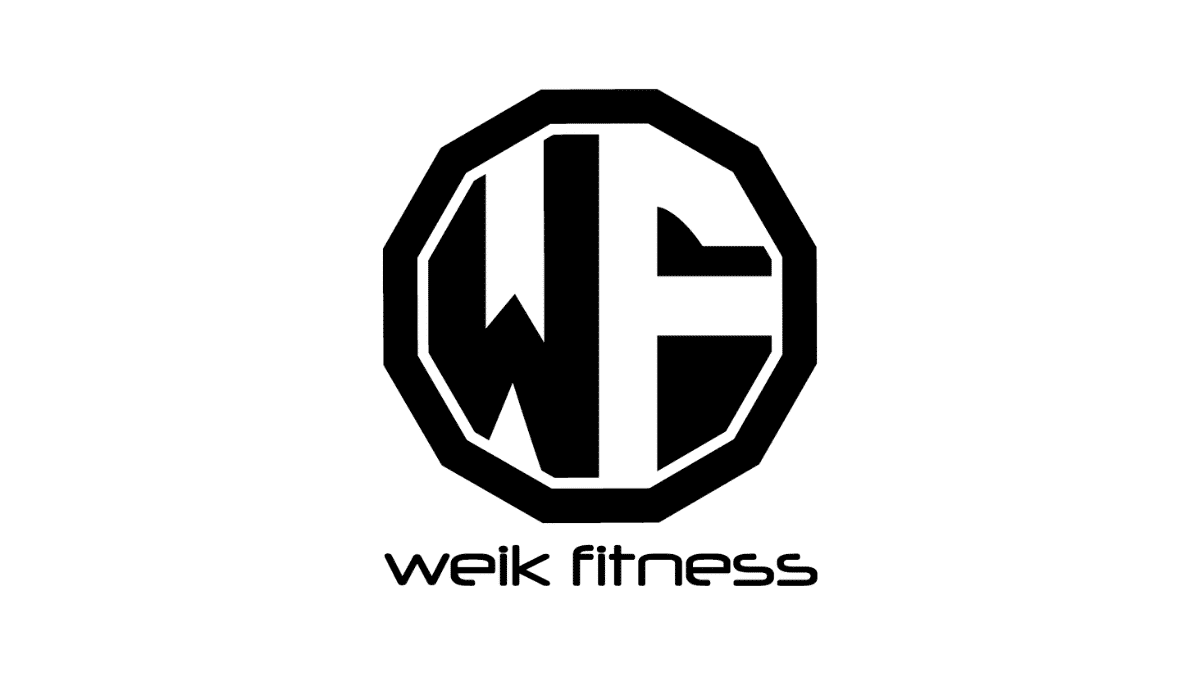From Goals to Growth: Building A Blog Content Strategy
We all know the feeling — gazing at our growing business’s online presence and seeing that the blog section is more of a ghost town than a bustling marketplace. You need a solid blog content strategy to outline your path to success.
You’ve heard it a million times: content is king, but the question remains — how do you transform your blog into an illustrious beacon that attracts readers by the thousands? Unfortunately, without a blog content strategy, you’re simply spinning your wheels without a roadmap to help guide you.
The challenges of finding that perfect direction or pinpointing what will truly click with your audience can make crafting an effective blogging strategy seem like navigating through fog.
But don’t worry, you’re not alone on this journey. Just like countless others, we’ve all faced these very hurdles ourselves. Interestingly enough, many ask why they should invest in a free blog and spend the time writing or outsourcing writers to build their content. Here’s something to think about: businesses sporting active blogs rake in 67% more leads than their silent competitors. What could you do with the ability to potentially close 67% more business?
With stats like that fueling your drive (and plenty of research under our belts), we’ve sharpened our skills at transmuting objectives into tangible growth via savvy blogging strategies. We’ve helped hundreds of brands build out their blog content strategy, write their content, and exceed their expectations. Many wish they would have started a blog sooner!

In this article, we’re peeling back the layers to reveal step-by-step tactics for creating an irresistible blog content approach from scratch — it’s about bringing lucidity to where there was once bewilderment and funneling laser-focused traffic as never before.
Get ready to see how effortless it can be to create a blog content strategy!
Key Takeaways
- A blog content strategy helps you create valuable content to attract and keep an audience.
- Good strategies increase leads, improve traffic and SEO, and build a strong brand presence.
- Research your “why,” competitors, target audience, and keywords for a successful plan.
- Create a unique blog identity that matches your brand values and connects with readers.
- Use data to guide your strategy for better results.
Table of contents
- Key Takeaways
- What is a Blog Content Strategy?
- The Benefits of Having a Well-Planned Blog Content Strategy
- How to Create a Blog Content Strategy That Delivers Results
- 1. Define your “why” for your blogging strategy
- 2. Research your competitors and target audience to decide what content to create
- 3. Do thorough keyword research to build a marketing strategy and build out your content
- 4. Create a content plan and content calendar for your new blog
- 5. Create your blog’s identity along with your blog content strategy framework
- Effective Content Only Comes After You Create a Content Strategy
- FAQs
What is a Blog Content Strategy?
A blog content strategy is a plan for creating and distributing valuable and relevant content to attract and retain a defined audience. An effective blog strategy involves identifying the type of content that will resonate with your target audience, how often you’ll write content and publish it, and where it will be promoted.
This strategic approach helps businesses achieve their marketing goals by consistently providing high-quality content that engages and converts readers.
Definition and purpose of an effective content strategy
Your blog content strategy is your master plan for success. Think of it as a map guiding you to your business goals using blog posts and other types of content. It’s more than just deciding what to write about; it involves understanding who will read your content, why they need it, and how it will drive them to take action that benefits your brand.

Creating this strategy means setting clear objectives and choosing the right tools — from social media platforms to email marketing — to spread your message. Every piece of content needs a purpose, whether that’s attracting new visitors with SEO or building trust through in-depth articles.
Your strategy keeps you focused on creating valuable content consistently, supporting business growth every step of the way.
The Benefits of Having a Well-Planned Blog Content Strategy
A well-planned blog content strategy can lead to increased lead generation, improved website traffic and SEO, as well as building a strong brand presence. It also provides an opportunity for transparency and showcasing a brand’s values and WHY.
Want to learn more about the benefits of a winning blog content strategy? Read on!
1. Increase lead generation with new blog content
Our blog content strategy boosts lead generation by connecting with our target audience. By creating valuable content, we draw potential customers toward our brand and products. We understand their needs and provide solutions through informative blog posts.
This approach not only attracts new leads but also nurtures existing relationships, keeping readers engaged and more likely to convert.
Related Article: 7 Reasons Why Your Business Needs a Blog
We use a variety of content types in our strategy to appeal to different preferences. Video content, infographics, and how-to guides are some examples. Each piece is carefully crafted with the goal of sparking interest and encouraging visitors to take action — whether that’s subscribing to a newsletter or requesting more information about our services.
Through consistent quality blog posts, we significantly increase the likelihood of turning casual readers into solid leads for our business.
2. Improve website traffic and SEO with good content
We understand the power of improved website traffic and better search engine optimization (SEO) for your business. High-quality blog content can make your site more visible to search engines.

This means more people can find you online when they’re looking for what you offer. Good SEO practices help your blog rank higher in search results, leading to more clicks and visits.
Let’s think about keywords, too — they are like magnets for your audience. When we use the right words in our posts, we draw readers who are interested in those topics. Writing great content that ranks well is not just about stuffing it with keywords, though; it’s a fine balance of relevance and quality that keeps readers engaged and coming back for more.
Related Article: Is Your Business Taking Advantage of Fitness Articles?
With every engaging post we craft, we pave the way for stronger traffic flow and better recognition by Google and other search engines.
3. Build a strong brand presence when adding content on your blog
A well-planned blog content strategy can elevate your brand presence. By consistently delivering valuable, insightful, and relevant content, you establish authority in your industry.
This, in turn, fosters trust among your audience and reinforces your brand’s identity. Additionally, a consistent brand voice across all content platforms helps solidify the image of your business in the minds of potential customers.

The authenticity showcased through a comprehensive blog content strategy not only boosts recognition but also positions you as a thought leader within your niche. Therefore, by creating engaging and impactful content that aligns with your brand values, you can effectively shape how others perceive and interact with your company — ultimately strengthening its presence in the market.
4. Opportunity for transparency and showcasing a brand’s values and WHY
Transparency is key for showcasing our brand’s values and WHY. When we share the journey behind our products or services, it builds trust with our audience. By being open about the motivations and beliefs that drive our brand, we connect on a deeper level with customers.
This transparency creates an authentic bond, attracting those who align with our values while also appealing to new audiences seeking genuine connections.
Our commitment to transparency is reflected in everything we do. Sharing stories of how our brand makes a positive impact resonates with customers on an emotional level. Demonstrating the “why” behind what we offer strengthens loyalty and sets us apart from competitors.
A perfect example is our website. We put out free content to help our readers while also showcasing our brand’s values. Our goal is to help as many people as we can. That’s another reason why I wrote the book “Write Your Way to a 6-Figure Income.”
How to Create a Blog Content Strategy That Delivers Results
To create a winning blog content strategy, start by defining your “why” and understanding your target audience. Conduct thorough keyword research to guide your content creation and create a solid content plan.
Establish your blog’s identity and ensure that it aligns with your brand values and goals. By following these steps, you can build a successful blog content strategy that resonates with your audience and drives results.
1. Define your “why” for your blogging strategy
Why is it important to have a clear understanding of your “why” when creating a blog content strategy? Your “why” is the driving force behind your content strategy, guiding every decision and action.

By defining your purpose and goals upfront, you can align your content with what matters most to your audience, ensuring that every piece of content serves a specific function in achieving those goals.
Understanding your “why” also provides clarity for target market research, helping you create content that resonates with the right audience and drives meaningful results. Without a solid grasp on your “why,” developing an effective blog content strategy becomes significantly more challenging.
2. Research your competitors and target audience to decide what content to create
Researching your competitors and target audience is critical to crafting a winning blog content strategy. Analyzing the competition provides valuable insights into their strengths and weaknesses, helping you identify gaps to capitalize on.
Understanding your target audience’s needs, preferences, and pain points allows you to tailor your content to resonate with them effectively, driving engagement and conversion. By leveraging these insights, you can create compelling content that sets you apart while addressing the specific needs of your intended audience.
Taking the time to thoroughly research your competitors and target audience equips you with the knowledge needed to develop a strategic approach that resonates with potential customers while standing out from the crowd.
3. Do thorough keyword research to build a marketing strategy and build out your content
To create a winning blog content strategy, it’s crucial to do thorough keyword research. This involves identifying the specific words and phrases your target audience is searching for online.
By understanding their search behavior, you can tailor your content to directly address their needs and interests. Keyword research also helps in optimizing your content for search engines, improving visibility, and driving more organic traffic to your blog.

Leveraging the right keywords strategically within your content enables you to connect with potential customers on topics they care about while boosting the overall effectiveness of your content marketing efforts.
Effective keyword research not only assists in ranking higher on search engine results pages but also guides the creation of relevant and valuable content that resonates with your audience’s intent and preferences.
Take this information and insert it into your content marketing plan. If you don’t want to create a plan or are unsure how, it’s recommended that you look to hire or outsource a content marketing service. Mapping out your content gives you the framework you need to build successful content for your audience to engage with.
4. Create a content plan and content calendar for your new blog
If you want to create an effective blog content strategy, you need a strategy for your blog to come up with content ideas. To create a content plan, we first need to define our “why” and align it with business goals. Next, research competitors and target audience to understand their needs and preferences. Conduct thorough keyword research to guide content creation and improve SEO. Then, outline a detailed content calendar to organize topics and publication dates.
Related Article: Boost Your Business Growth with a Blog Content Calendar
Establish the blog’s identity through consistent branding and messaging. Finally, continuously review and adjust the plan based on performance metrics for continuous growth.
5. Create your blog’s identity along with your blog content strategy framework
Craft a unique and compelling blog identity that resonates with your audience. Incorporate your brand’s values and personality into the content, creating a consistent tone and style.

Establish a clear visual identity through logo design, color schemes, and imagery to make your blog visually appealing and memorable. Ensure that every piece of content reflects your brand’s voice and reinforces its identity, building trust and loyalty among your readers while building out your content marketing strategy.
Define your blog’s identity by merging originality with relevance in content creation. Reflect on our target audience’s preferences while infusing our brand essence into each blog post — from choice of words to visual elements.
Once you have all of this figured out and you have quality content up on your blog, you need to promote your blog and distribute your content. If you don’t promote your content, you’re missing a huge opportunity to create a successful blog that boosts traffic and sales conversions. Content marketers are great at creating blog content, but if you don’t put your blog out in front of your audience, no one will know it’s even there.
Effective Content Only Comes After You Create a Content Strategy
To wrap this up, developing a blog content strategy is vital for achieving business goals and driving growth. It provides a roadmap for creating engaging content that resonates with your audience while contributing to increased website traffic and lead generation. A successful content strategy is invaluable and constantly works for you in the background, thanks to SEO and your in-depth content.
Does this mean you need to create several blog posts per day and create a lot of content? No, not at all. But your content production should have you craft a blog at a minimum of 1-2 times per month. A content strategy that’s worked for many of my clients has been weekly blog posts where we create one blog post, and that strategy is working incredibly well.
Related Article: Do You Need a Content Editor to Edit Your Website or Blog?
The quality of your content also matters. You can’t have thin content that isn’t SEO-optimized. Create a successful blog content strategy that helps give your blog legs to stand on in the eyes of not only Google but also your audience. Churning out content without an SEO-optimized content strategy for your blog is like fishing in the dark. The success of your content comes from your preparation and attention to details when writing your blog posts. Writing your blog content takes time — time that many people don’t have when running a business or department.

A content calendar keeps things organized so that you know how many blog posts you need each month, when they will go live on the site, how you’ll organize your content from month to month, and is a solid addition to a sound content strategy.
By following the steps outlined in this guide, you can craft a winning content strategy that sets your brand apart and propels it toward success. Embracing practical tips and a data-driven approach will help you create compelling content that not only meets your audience’s needs but also fuels the growth of your business.
If you have zero interest in building a blog content strategy on your own, contact us and we can help take that off your plate and even create the content for you. You then have the ability to focus on other areas of your business and leave all the heavy lifting of building out your blog to us. Are you ready to get started? Let us be your Head of Content.
FAQs
You need a blog content strategy because it’s the plan that helps you decide what type of content to create, who you’re creating it for, and how it will grow your blog over time. It guides your efforts so you can make good content that connects with your audience.
To create an effective strategy, start by setting clear goals for what you want your blog to achieve. Then, run a content audit to see what’s working and what’s not. Next, learn about your readers to build out new content they’ll love.
The number of new posts depends on your goals and resources. Some successful blogs post many times a week, while others only post once a month. Remember, the key is consistently delivering valuable information that serves your readers’ needs.
Sure! Different types of content might include how-to guides, listicles, interviews with experts or influencers in your field, in-depth research articles, or even free templates that help solve common problems for your readers.
Promote your fantastic work by sharing it across social media platforms where your target audience hangs out; use email marketing to notify subscribers about new posts; reach out to other bloggers or websites for collaboration opportunities; and don’t forget SEO strategies to help people find you through search engines!
If things aren’t picking up despite crafting thoughtful posts regularly — pause and analyze why! Look at whether the topics are closely aligned with reader interests or if there’s more competition than before that affects visibility.


*Disclosure: This article may contain affiliate links or ads, which means we earn a small commission at no extra cost to you if you make a purchase through these links. These commissions help support the operation and maintenance of our website, allowing us to continue producing free valuable content. Your support is genuinely appreciated, whether you choose to use our links or not. Thank you for being a part of our community and enjoying our content.
PLEASE CONSIDER SHARING THIS ON YOUR SOCIAL MEDIA TO HELP OTHERS LEARN MORE ABOUT THIS TOPIC.





